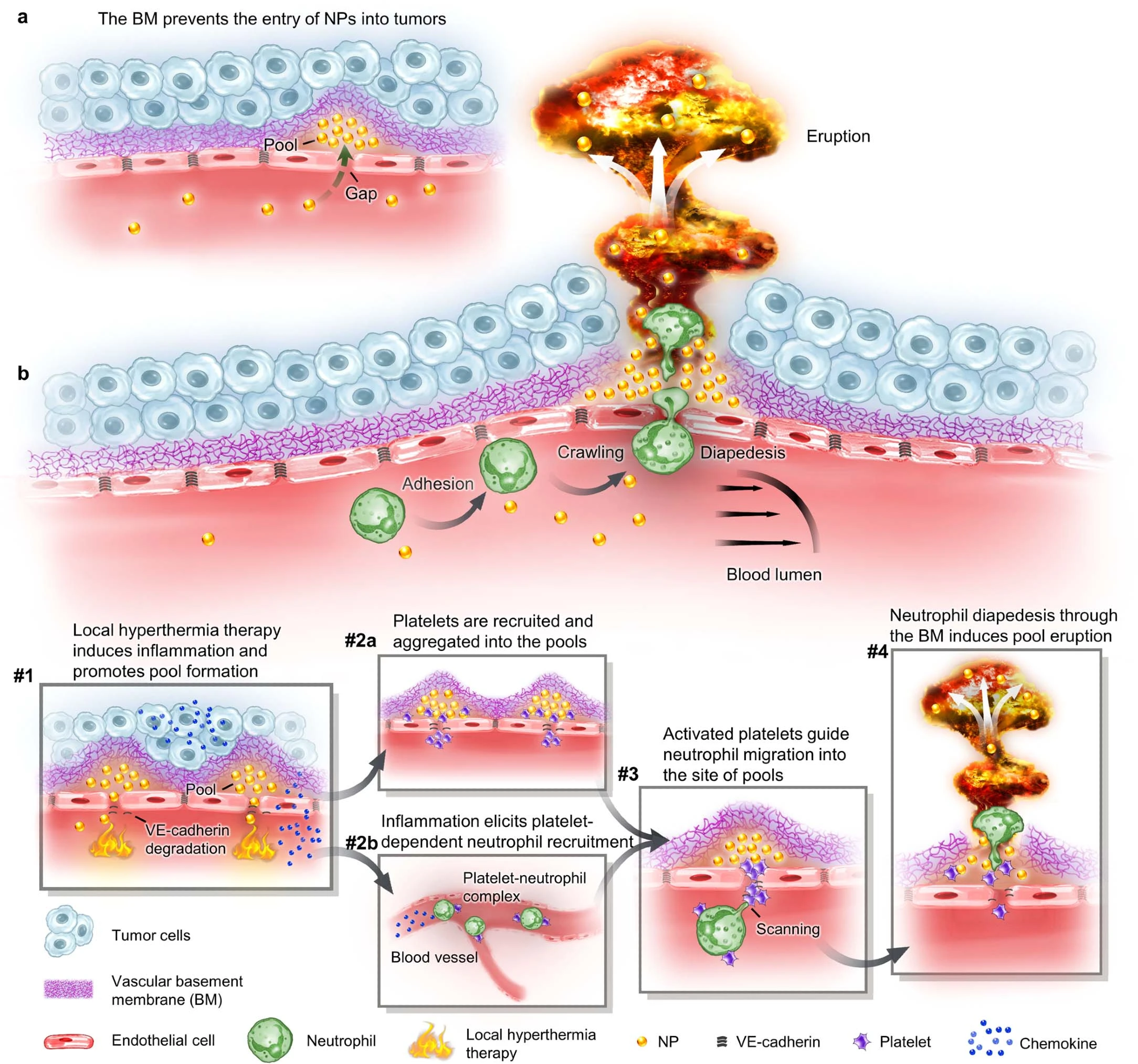Prof. Yucai Wang and Assoc. Prof. Wei Jiang, leading a research team at the University of Science and Technology of China (USTC) within the Chinese Academy of Sciences (CAS), has unveiled the previously unknown mechanism of how tumor vascular basement membranes obstruct nanoparticles (NPs).
 Schematics of inflammation-induced neutrophil movement breaking through BM and causing explosive release of NPs. Image Credit: Qin Wang et al.
Schematics of inflammation-induced neutrophil movement breaking through BM and causing explosive release of NPs. Image Credit: Qin Wang et al.
The team has also pioneered an immunodriven approach to enhance NP penetration through this basement membrane barrier. The research was published in Nature Nanotechnology on September 14th, 2023.
Earlier research on the nanotherapeutic transport from the vasculature to the tumor greatly depended on the Enhanced Permeability and Retention effect (EPR). It was believed that NPs can cross the tumor vascular endothelial barrier, the last defense of NP penetration, by manipulating the high permeability of tumor vessels.
Clinical trials revealed that nanoparticles (NPs) only deliver a limited quantity of drugs to the tumor tissue, indicating the presence of additional mechanisms that impede NP penetration.
In this research, the team hired multistep non-invasive intravital microscopy and revealed that the basement membrane surrounding the endothelial cells and mural cells of tumor vessels severely impedes the extravasation of NPs. As a result, perivascular NP pools are formed in the subendothelial void.
The team found enzyme degradation of the basement membrane that reduces the NP pooling and boosts the transport efficiency of nanomedicine after exactly investigating the spatial positioning, microstructure, and reasons for the NP pools.
Building on this discovery, they devised an immunodriven strategy that leverages localized proteolytic enzymes released by inflammatory leukocytes to establish a transient opening in the basement membrane. This opening facilitates a rapid and substantial release of nanoparticles (NPs) deep into the tumor, ultimately enhancing the concentration of nanomedicines and their therapeutic effectiveness.
This study not only offers a groundbreaking nanomedicine transport strategy, distinct from the Enhanced Permeability and Retention (EPR) effect, but also lays the foundation for a fresh theoretical basis for the utilization of nanotherapeutics in cancer treatment. It contributes to advancing the comprehension of the transvascular transport mechanisms of NPs.
Journal Reference:
Wang, Q., et al. (2023). Breaking through the basement membrane barrier to improve nanotherapeutic delivery to tumors. Nature Nanotechnology. doi.org/10.1038/s41565-023-01498-w.